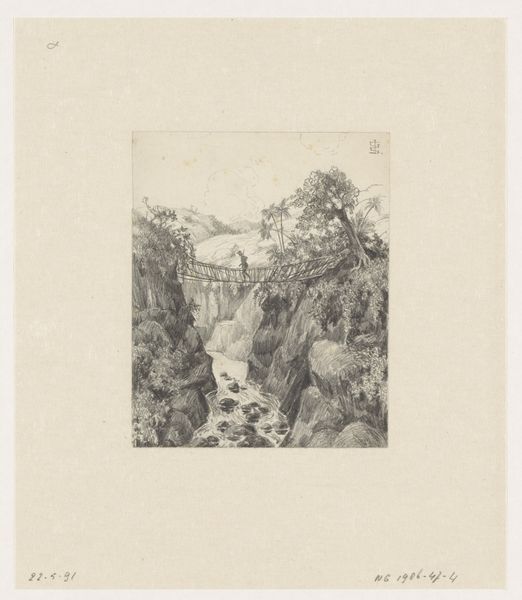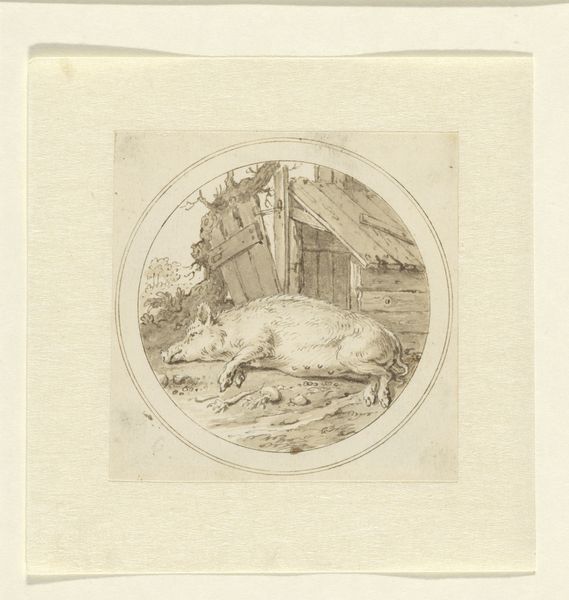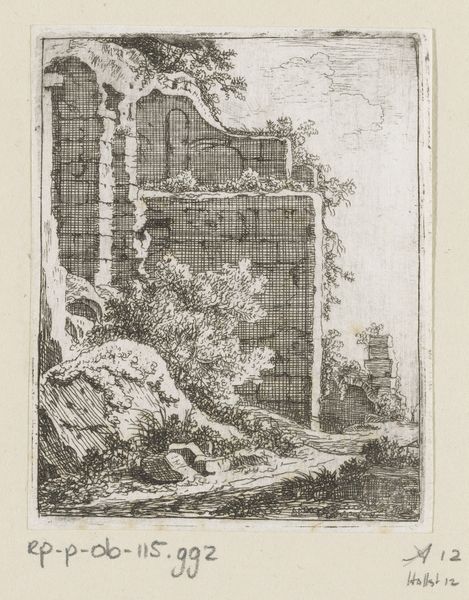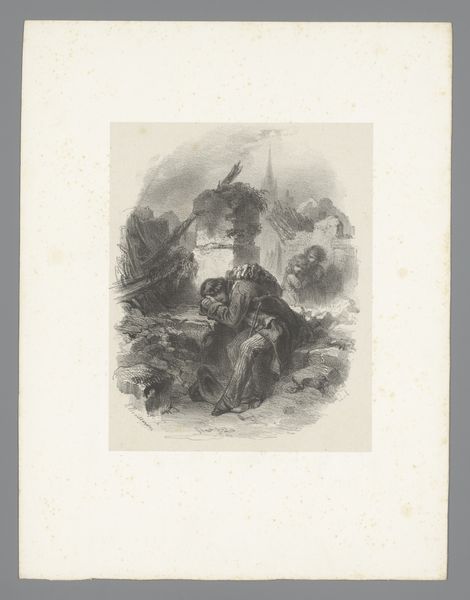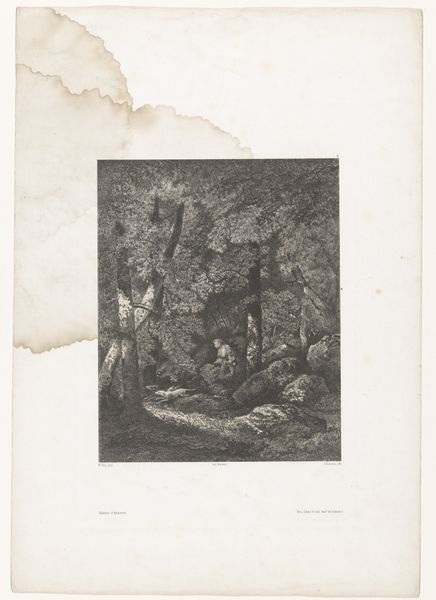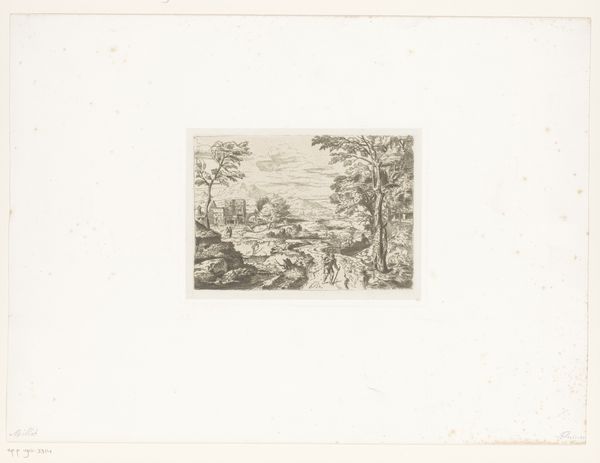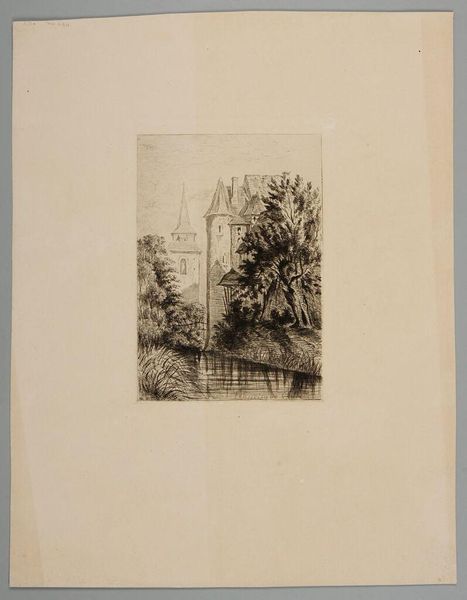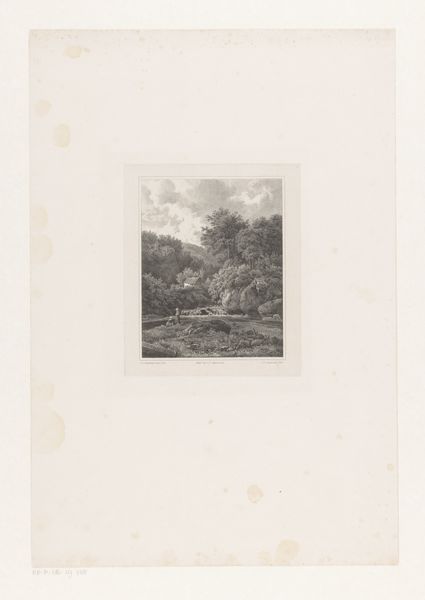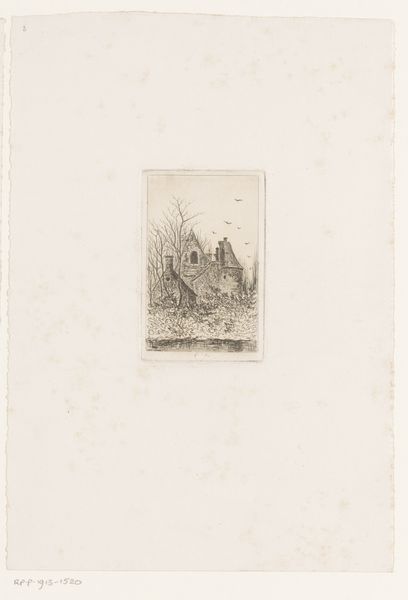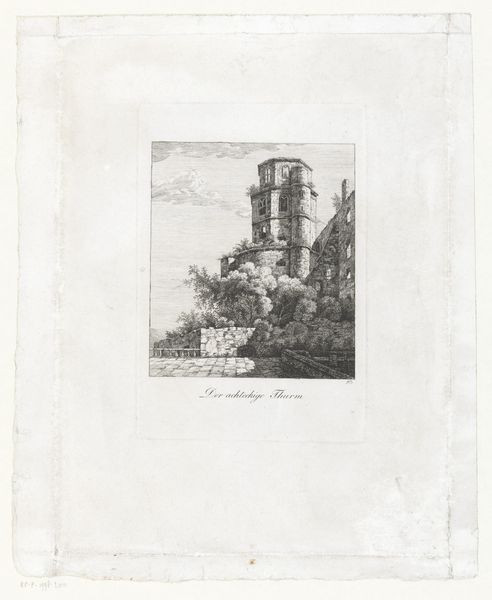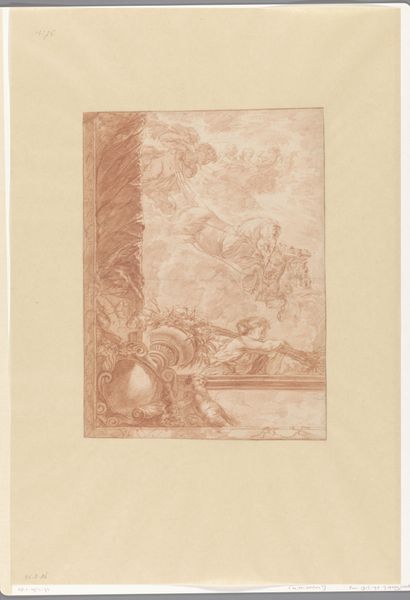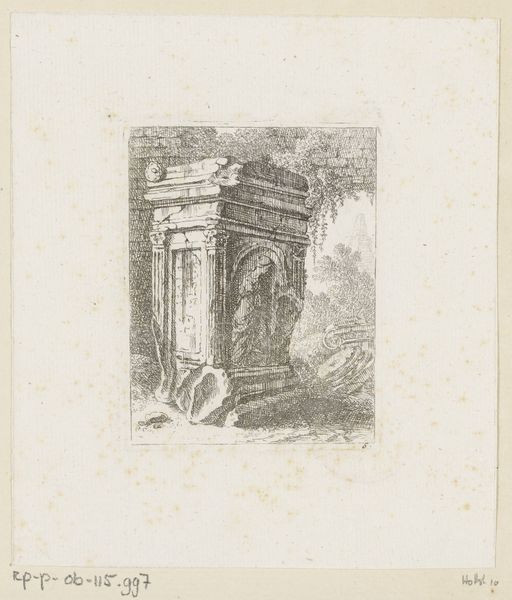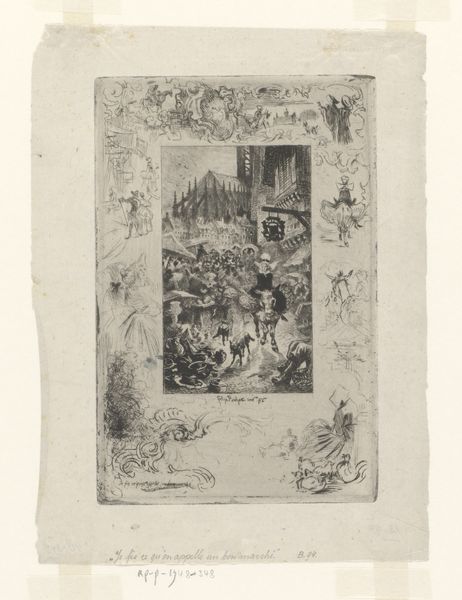
print, etching
#
baroque
# print
#
etching
#
landscape
#
cityscape
Dimensions: height 86 mm, width 68 mm
Copyright: Rijks Museum: Open Domain
Curator: Up next, we have Johann Franz Ermels the Elder's "Muur van een ruïne," or "Wall of a Ruin," an etching created sometime between 1651 and 1693. Editor: There's something quite melancholic about this piece, isn't there? The stark lines of the ruin contrasted with the softness of the surrounding foliage creates a palpable sense of decay and the ephemeral nature of things. Curator: Absolutely. The crumbling wall is likely a reference to the grand architectural achievements of antiquity, perhaps Roman, serving as a potent memento mori for the viewer. It reminds them of the inevitable decline of empires and all human endeavors. Editor: And consider the way the vegetation seems to be reclaiming the stone. Nature asserts itself, blurring the boundaries between what was constructed and what grows organically. It embodies a recurring visual trope of ruins throughout art history: nature as the great leveler. The ruin itself is a potent symbol of resilience amid time's passage. Curator: It's also important to acknowledge the broader Baroque context here. Ruins like these became increasingly popular during this time, particularly as a means to reflect on the past and evoke feelings of awe and even terror at the transience of human existence. Patrons and artists collected prints depicting Roman ruins because they referenced civic duty, morality and virtue tied to power. Editor: Right. The visual language of ruins became a symbolic shorthand. Beyond just loss, I see strength. The etching technique itself contributes to the effect. The dense, almost frantic lines lend a textured, weighty feel to the crumbling stones, while the lighter strokes depict the surrounding foliage and airy sky. This detail heightens the emotional impact, giving a sense of layered reality. Curator: And don’t underestimate the cultural context—prints like this would have been relatively affordable and widely disseminated, allowing a broader audience to contemplate such themes and learn about antique architectural design. They fostered both a visual appreciation for art and architecture. Editor: Seeing this piece makes me think of the cycles of history. Civilizations rise and fall, but something always remains. Curator: Precisely. It encourages us to reflect not just on the past, but also on our place within the grand sweep of time.
Comments
No comments
Be the first to comment and join the conversation on the ultimate creative platform.
